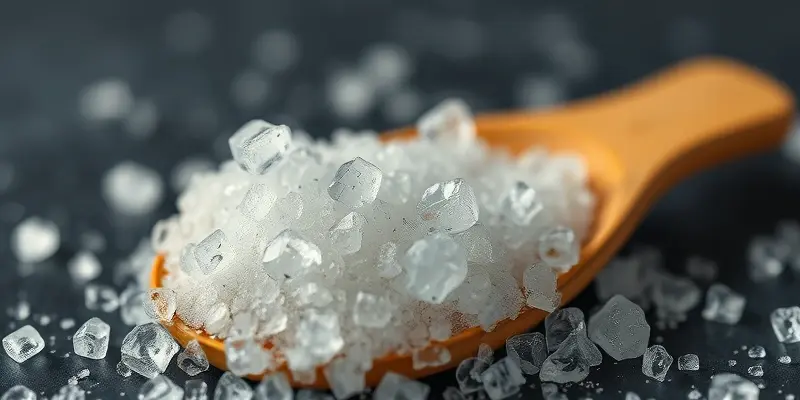Staying healthy and injury-free is every runner’s goal, whether you’re a weekend jogger or a marathon veteran. Most athletes know hydration matters, but did you know getting enough sodium in your diet can make a major difference in how you recover—and how well you avoid common setbacks like cramps, fatigue, or even more serious injuries?
Let’s dig into why sodium is a must-have for active people, how much you actually need, and practical ways to keep your body performing at its best.
Why Sodium is a Game-Changer for Runners
Think of sodium as the “conductor” in your body’s orchestra: it keeps muscles firing smoothly, nerves sending clear signals, and fluids flowing where they need to go. Here’s why it matters:
- Maintains fluid balance: Sodium helps you retain the right amount of water, instead of flushing it out and risking dehydration.
- Enables muscle and nerve function: Without enough sodium, muscles may misfire—leading to cramps or early fatigue.
- Aids nutrient delivery: With proper sodium levels, your blood can efficiently carry oxygen and nutrients to hard-working muscles.
- Promotes quick recovery: Sodium is crucial for optimal rehydration and muscle repair post-exercise.
When you sweat—especially during long runs, hot days, or intense workouts—you’re losing sodium by the minute. Replenishing it isn’t just about comfort; it’s about keeping your body safe and strong.
How Much Sodium Do You Really Need?
No two runners are the same! Sweat rates and sodium loss depend on factors like genetics, weather, workout intensity, and even your own fitness level. Here’s what research suggests:
- Average sodium loss: Most runners lose about 900 mg per liter of sweat. Some lose as little as 350 mg/L; heavy or “salty” sweaters can lose up to 1800 mg/L!
- Typical sweat rates: These range from 0.3 to 2.4 liters per hour—higher during long, hot, or humid sessions.
Here’s a quick reference table:
| Workout Situation | Sodium Needs (per hour) | Practical Tip ||—————————–|————————–|—————————————|| Easy runs (<1 hour) | Normal diet (1500–2300 mg/day) | No extra sodium needed || Long/hard runs (>2 hours) | 300–600 mg | Use sports drinks, salty snacks || Hot/humid conditions | Up to 700 mg/liter beverage | Increase intake; avoid very salty drinks (>1000mg/L) || Heavy/salty sweaters | Adjust based on your sweat | Consider a sweat test or sodium calculator |
Not sure where you fall? Pay attention to visible sweat marks on clothing, salty taste, or recurring cramps—these are signs your sodium losses are higher than average.
Sodium and Recovery: Science-Backed Benefits
Why not just drink more water after a run? Because plain water can actually dilute your blood sodium levels, sometimes causing symptoms like headache, nausea, or—rare but dangerous—hyponatremia (low blood sodium).
Getting enough sodium:
- Enhances fluid retention: You keep more of what you drink.
- Reduces cramps and fatigue: By supporting electrical signals in muscles and nerves.
- Speeds muscle recovery: By helping nutrients reach damaged muscle fibers, accelerating repair.
Studies show athletes who rehydrate with sodium-containing fluids recover faster and are less prone to muscle soreness than those who stick to water alone. It’s not just about performance—it’s about bouncing back and staying injury-free.
Practical Sodium Strategies for Every Runner
Ready to put this into practice? Here’s how to make sodium an ally in your training:
- Before a long run: Consider a salty snack (pretzels, broth) or electrolyte drink, especially in warm weather.
- During exercise (>1 hour): Sip a sports drink with 500–700 mg sodium per liter. For very long or hot runs, you may need up to 700 mg per hour.
- After your run: Prioritize drinks or snacks with both sodium and carbohydrates to kick-start recovery.
- Monitor signs: Watch for persistent cramps, dizziness, or feeling overly wiped out after workouts.
- Don’t ignore potassium or magnesium: These also support muscle recovery, so choose balanced electrolyte products.
If you’re unsure of your exact sodium needs, start modestly and track how you feel—then adjust up or down. Personalized “sweat tests” or sodium calculators can provide exact numbers if you want to optimize further.
Conclusion: Make Sodium Part of Your Recovery Game Plan
To sum it up: sodium isn’t just a buzzword—it’s a foundation for athletic health and long-term improvement. By understanding (and respecting) your body’s sodium needs, you’ll recover faster, reduce injury risk, and perform at your best—no matter your starting point.
Experiment safely, listen to your body, and don’t hesitate to consult with a sports nutrition expert if you have medical conditions or unique training goals.
About the Author
As the lead writer for GymPulse and a fitness coach with over a decade of real-world experience, I’m passionate about helping runners and athletes optimize recovery with proven, science-based strategies. Let’s stay strong and healthy together—on every run, and every day.

